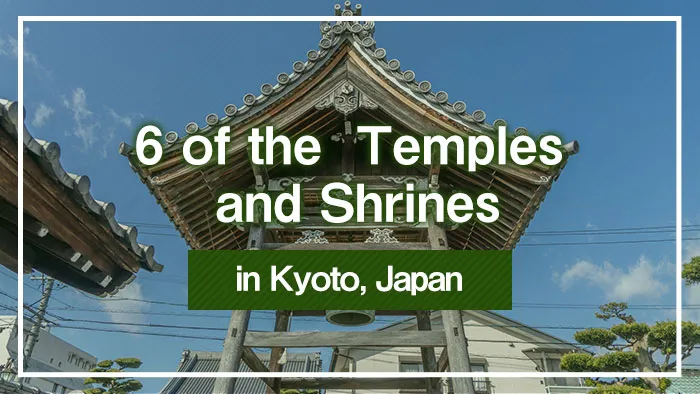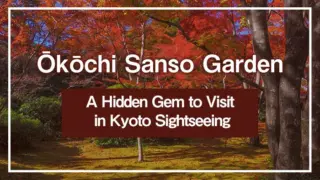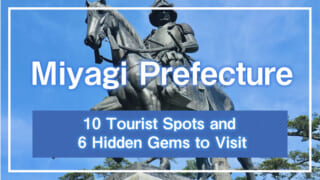Kyoto is home to many temples and shrines that breathe history and culture. This article carefully selects temples and shrines that you must not miss when visiting Kyoto.
For temples, we feature Kiyomizu-dera, Kinkaku-ji, and Ryoan-ji, summarizing their charm and points of interest. For shrines, we cover Fushimi Inari Taisha, Yasaka Shrine, and Kamigamo Shrine, exploring their history and unique characteristics.
We also give you tips and recommendations for good ways to enjoy Kyoto’s temples and shrines, so use this article as a reference to plan your wonderful trip around Kyoto’s magnificent sacred sites.
1.Three Recommended Temples to See in Kyoto
Kyoto is home to many of Japan’s most iconic and beautiful temples. Here, we introduce three must-visit temples for tourists visiting Kyoto. Make wonderful memories at these historic and beautiful temples
1-1.Kiyomizu-dera
Kiyomizu-dera, located on the hillside of Otowa Mountain in the Higashiyama area of Kyoto, is one of the top tourist spots in the country. With over 1250 years of history, Kiyomizu-dera is also one of the oldest temples in Japan.
The wooden stage jutting out from the main hall, known as the “Kiyomizu Stage,” is particularly famous. The view of Kyoto city from the 13-meter-high stage and the seasonal natural beauty is breathtaking.
Behind the main hall is the Jishu Shrine, famous for its love blessings. When visiting the grounds, check out the popular “Love Fortune Stones.” It is said that if a visitor can walk from one stone to the other with their eyes closed, their love will be fulfilled.
At the base of the main hall is the Otowa Waterfall, a very rare spot. The pure water of Otowa Waterfall is believed to bring long life, success in studies, and fulfillment in love. The magnificent view and historical buildings of Kiyomizu-dera leave a deep impression on visitors to Kyoto.
Gio-ji Temple: Basic Information, Highlights, and Beautiful Seasons
1-2.Kinkaku-ji
Kinkaku-ji is one of Kyoto’s most visited and highly rated tourist spots. Recognized for its beauty and historical value, Kinkaku-ji is registered as a UNESCO World Cultural Heritage site.
Established in 1393 and later renovated by Ashikaga Yoshimitsu as his retirement villa, the current Kinkaku-ji was rebuilt in 1955, faithfully reproducing its historical design.
The most striking feature of Kinkaku-ji is its luxurious exterior.The upper two floors of the three-story building dazzle visitors with their coat of gold leaf.
The surrounding gardens include waterfalls and natural springs, offering a soothing stroll. With easy access by bus from Kyoto Station, Kinkaku-ji is a must-visit spot during your Kyoto trip.
World Heritage Site Ginkaku-ji: History, Must-See Spots, and How to Get There
1-3.Ryoan-ji
Ryoan-ji, located in the northwest of Kyoto city, is a Zen temple of the Rinzai sect Myoshinji school, established in 1450. Its garden, considered Japan’s finest rock garden, is a particularly popular attraction known for its beauty and mystery.
The garden, covering 248 square meters, features 15 stones arranged in such a way that no matter where you stand, you can only see 14 stones at once. The garden’s meaning and design remain largely mysterious, offering visitors the pleasure of discovering their interpretations.
Additionally, the temple grounds feature beautiful scenery, including vast gardens with trees and moss, and a pond called Kyoyo-chi. The mystical charm and majestic nature of Ryoan-ji deeply move its visitors.
2.Three Recommended Shrines to See in Kyoto
Kyoto is home to many solemn and mysterious shrines. The three featured shrines are excellent spots for viewing beautiful landscapes and historic architecture in all seasons. Be sure to visit these unique Kyoto shrines.
2-1.Fushimi Inari Taisha
Fushimi Inari Taisha, located in southern Kyoto, is one of Japan’s most beautiful shrines. Established in 711, Fushimi Inari Taisha attracts many worshippers praying for business prosperity and household safety.
The most iconic feature is the Senbon Torii, a path lined with thousands of torii gates. The tunnel of vermilion torii is breathtaking and captivates tourists. Take a walk through the torii path and explore the surroundings.
One reason for its popularity is the excellent access by train. Fushimi Inari Taisha is just a 5-minute ride from Kyoto Station to JR Inari Station, followed by a 3-minute walk.
Visitors can enjoy taking photos in front of the torii for social media or simply immerse themselves in the scenery. The thousand-year history and grand scenery are worth seeing.
2-2. Yasaka Shrine
Yasaka Shrine, located in the southern Higashiyama area of Kyoto, offers a great view over the Gion entertainment district. Its history dates back to 876 when it was founded to enshrine Gozu Tennou, a deity believed to ward off epidemics.
The Gion Festival, one of Kyoto’s three major festivals, is Yasaka Shrine’s festival. The vibrant floats and procession in period costumes attract numerous visitors from Japan and abroad.
The shrine grounds are situated just below Maruyama Park, a famous cherry blossom viewing spot, surrounded by beautiful nature. Yasaka Shrine has deep significance in Japanese people’s daily lives, hosting weddings and baby celebrations. It is a special place for visitors.
One of the highlights is the gigantic torii, said to be the largest in Japan. Enjoy the lively atmosphere during the day and the enchanting illuminated scenery at night.
2-3.Kamigamo Shrine
Kamigamo Shrine, located in the northern part of Kyoto away from the city center, is a historic shrine officially named Kamo-wake-ikazuchi Shrine. Its history dates back to the 7th century, before the establishment of Heian-kyo.
Dedicated to Kamo-wake-ikazuchi-no-mikoto, the shrine is known for prayers for abundant harvests and protection of the capital. It’s also recommended to visit by bicycle, enjoying the scenic Kamo River along the way.
The Kamo Festival, also known as the Aoi Festival, held in May, is particularly famous. During the festival, people dressed in various period costumes form a long procession from the Kyoto Imperial Palace to Shimogamo Shrine, and on to Kamigamo Shrine. The shrine grounds include many national treasures and important cultural properties, all registered as UNESCO World Heritage sites.
3.Highlights of Kyoto’s Temples and Shrines
To further enjoy Kyoto’s temples and shrines, focus on the following three points:
・Karesansui (Dry Landscape Garden)
Karesansui is a type of traditional Japanese garden that uses gravel and rocks to represent water scenery without using actual water. The simple yet elegant landscape is calming to view. Using your imagination to ponder the garden’s meaning is also part of the fun.
・The Four Seasons
Temples and shrines offer different atmospheres depending on the season. In spring and summer, the contrast between the green trees and the vermilion torii is beautiful. Autumn is the best season for foliage. Around late November, the leaves turn red and yellow, providing stunning views. The snowy scenery in winter is breathtaking, revealing the mystical appearance of the sacred sites.
・Buddhist Statues
Be sure not to overlook the Buddhist statues in the temples and shrines. For example, Fushimi Inari Taisha features many fox statues, believed to be the messengers of Inari.
Sanju-sangen-do is famous for its 1,001 statues of the Thousand-Armed Kannon. The sight of these statues densely packed together is overwhelming. The solemn scenes created by the Buddhist statues are a highlight of a Kyoto visit.
Having prior knowledge will help you appreciate the key points when visiting, allowing you to understand and enjoy the sacred sites more deeply. If you know which temples and shrines you will visit, it is recommended to research their gardens, seasonal views, and Buddhist statues in advance.
Conclusion
Kyoto boasts numerous captivating temples and shrines, each with its unique history and beauty. The temples Kiyomizu-dera, Kinkaku-ji, and Ryoan-ji, along with the shrines Fushimi Inari Taisha, Yasaka Shrine, and Kamigamo Shrine, are all worth visiting. These sacred sites offer stunning landscapes, beautiful gardens, and historic buildings year-round.
By having prior knowledge, you can gain a deeper understanding and greater appreciation, making your Kyoto trip even more fulfilling. Use this article as a reference and visit these amazing temples and shrines. Create memorable experiences with the wonderful scenery woven with history and nature on your journey around Kyoto’s sacred sites.
*This article is based on information available as of May 2024.























